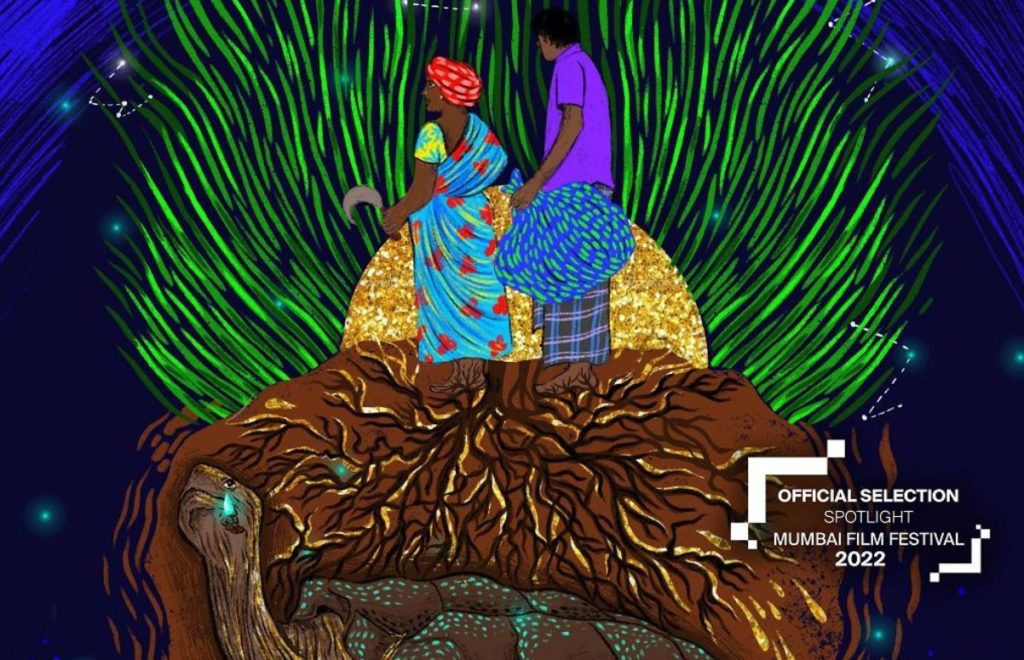
Docu-fiction – Tortoise Under the Earth (Dharti Latar Re Horo)
Author: Neeraj Bunkar
It is an encouraging thing that these days such artists are coming out who are bringing forward the narratives related to the deprived sections of society through their art, whether it is literature or films. In this process, I got to know such a tremendous filmmaker Shishir Jha through his art and craft. His recently released docudrama film Tortoise Under the Earth is a great treat in this milieu. This film is positioned in the Adivasi area of Jharkhand state and exposes the issue faced by the Santhal- the largest tribe in the state. The state is rich in minerals and uranium was discovered there in the 80s. Since then, the mining industry has grown drastically.
The movie starts with a narration that talks about the folklore of a haunted banyan tree. The darkness slowly turns into light when the narration revealed the truth of the haunted tree and the deaths of people. The truth exposes the reality and breaks the myth that prevails in the area. In this way, the film represented the genre of slow cinema where everything is captured in a way that one can feel the continuity with every aspect of the frame. The film tells the story about the life of these tribal people and the impact uranium mining has had on them.
Adivasi songs that people sing on various occasions are amazingly captured and translated for a larger audience. Through this one can get a glimpse of tribal attachments with nature and animals, fraternity and togetherness in all the festivals. Folklore is an integral part of the Adivasi culture, and the director involves us through this in the entire episode. Radio transistor is used to highlight the tribal’s demand and struggle in the new developmentalist regime. The film narrates the story of a tribal couple coping with the loss of their daughter in the Uranium Mining area in the state of Jharkhand, India. Centralising their story, the director touches upon many important issues of the tribal people like displacement, migration to cities, leaving the land where they spend the whole of their life.
Matter, life and movement all together can be seen in the movie. Images and sound are crucial parts of this film. You abide to live through images, the sound you hear opens the new world of imagination. Director uses mural paintings for the craft to offer the aesthetic values of tribal people. Through this, we can connect to the deep-rooted narratives of the Adivasis.
Music and the songs in the movie are beautifully placed to represent the feeling/sorrow of the people. Songs and folklore tell us about the beauty of the land and the anguish for the destruction of the richness and magnificence of the place. Long shots in the movie compel us to think wider through Adivasis perspective offer a new reality on screen. Chirping birds and the natural sound of the flowing river, rain, walking animals and wind connect us to nature and raise a serious question for politicians, businesspeople, contractors, moneylenders and for us as a common audience, why and how someone can destroy the authenticity and the originality of the place?
The idea of having non-actors perform the lead role in the film is coming out very realistic and naturally. The couple Jagarnath Baskey, Mugli Baskey performed effortlessly, and we can feel their emotion as an audience without any obstacle. Their eyes speak more than words. The music by Durga Prasad Murmu mesmerizes us. If I have to conclude the gist of the movie in a few lines then I would say, first they constructed roads and then they reached to our land through those new smart roads and then slowly and smartly snatched everything from us- our homes, our dreams, our present and future. They achieved progress and we become homeless and jobless. In this time of hatred and politically motivated space of cinema, we should encourage filmmakers like Shishir, Seral, Sriram, Nagraj, Pa. Ranjith and Mari Selvaraj for showing the different shades of the screen, realising the compassion and humanitarian perspective of people.
Author – Neeraj Bunkar is a PhD scholar at Nottingham Trent University, England



+ There are no comments
Add yours